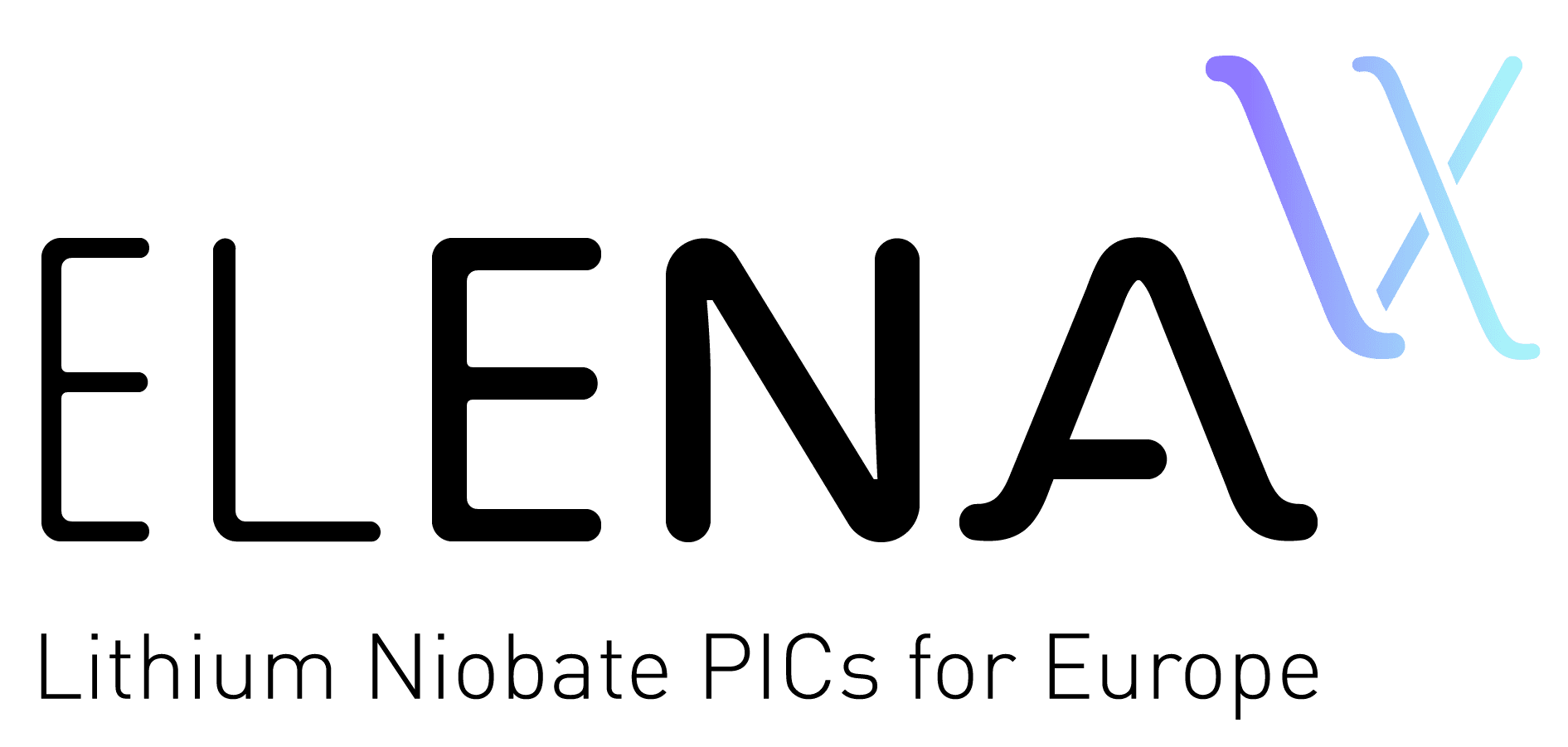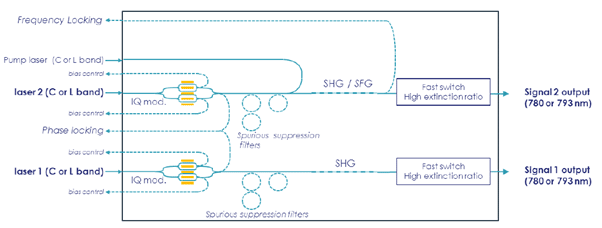ELENA will produce four different end-user prototypes based on ELENA’s library of building blocks for complex, functional PICs of industrial relevance.
The purposes of the prototypes are to
- demonstrate the superior performance of an LNOI platform compared to state-of-the-art platforms in relevant industrial settings;
- show the monolithic integration of various building blocks into more complicated photonics circuits;
- receive crucial feedback from end users during the early stage of technological development.
THALES will produce two prototypes spanning applications from quantum sensors (cold atom and control of rare-earth ions) to optical gyroscopes. The key LNOI functionalities for these prototypes are pure-phase shifters, frequency conversion (PPLN) and fast optical switches.
ROS’s prototype will take advantage of low-loss, low Vπ and ultra-fast modulators to demonstrate RF analogue signal transmission over optical fibers.
III-V Lab represents applications in the telecom sector and high-speed optical transmission. The planned prototype will leverage fast tunable cavities, optical switches and PWBs to construct chip-scale fast tunable lasers.





